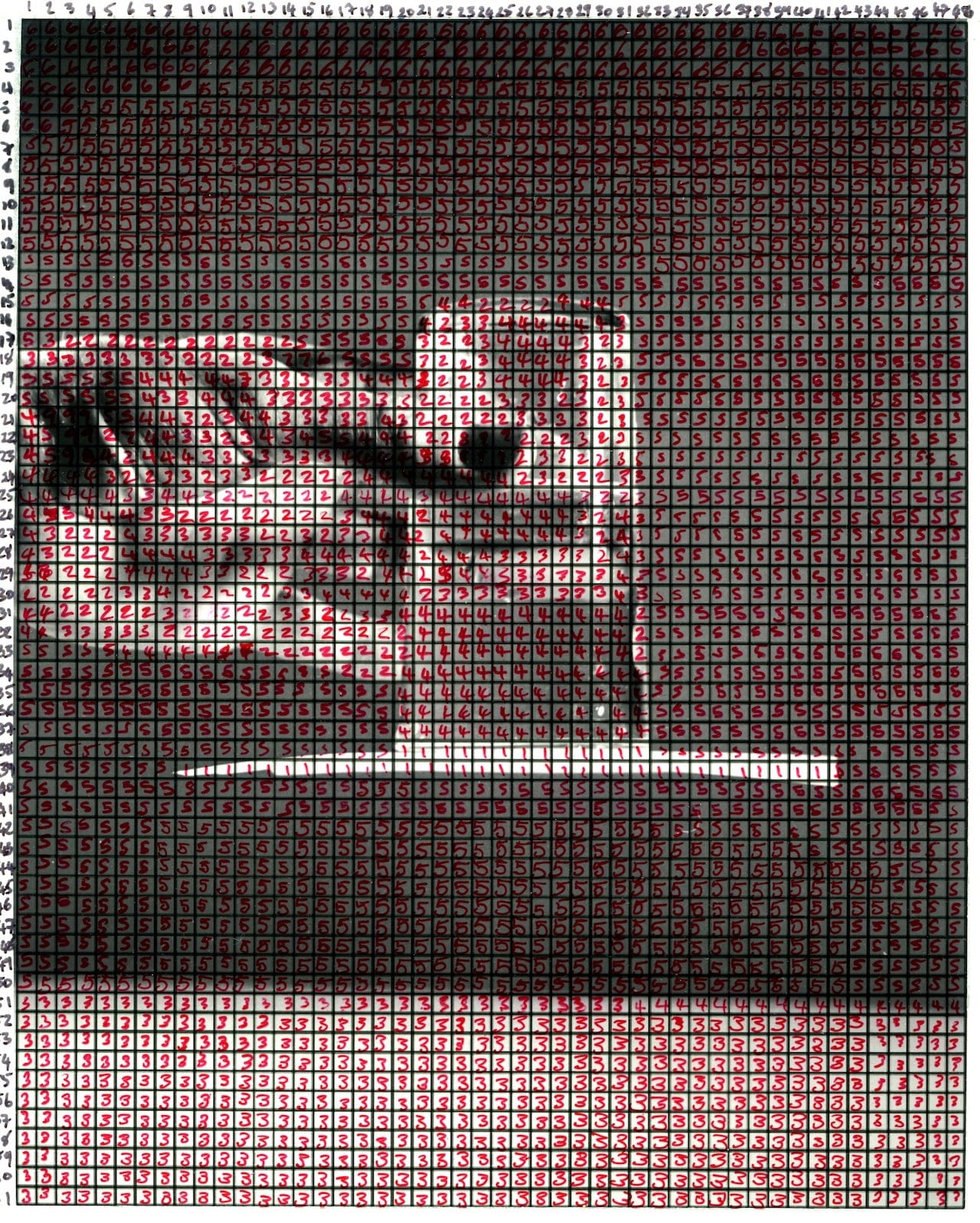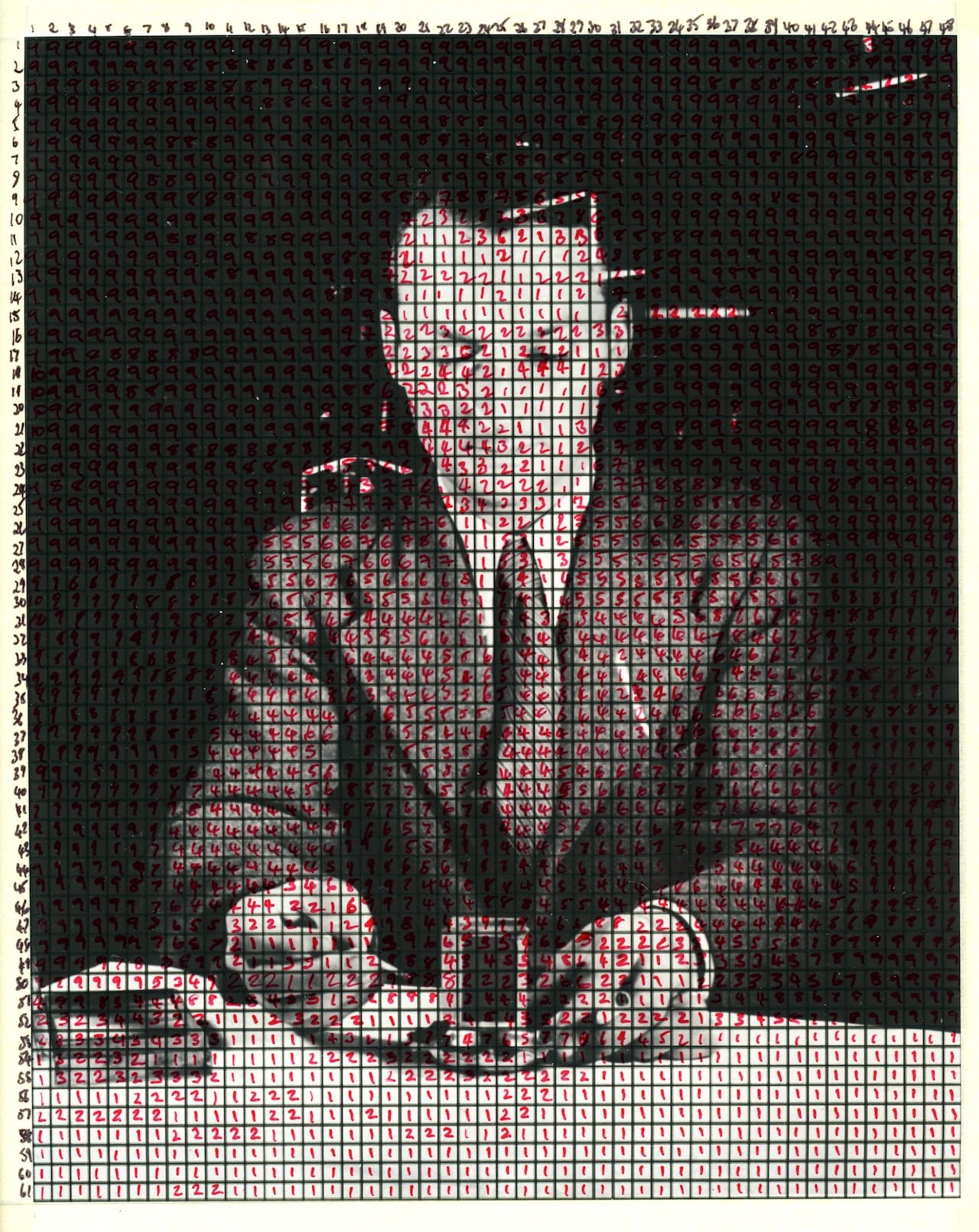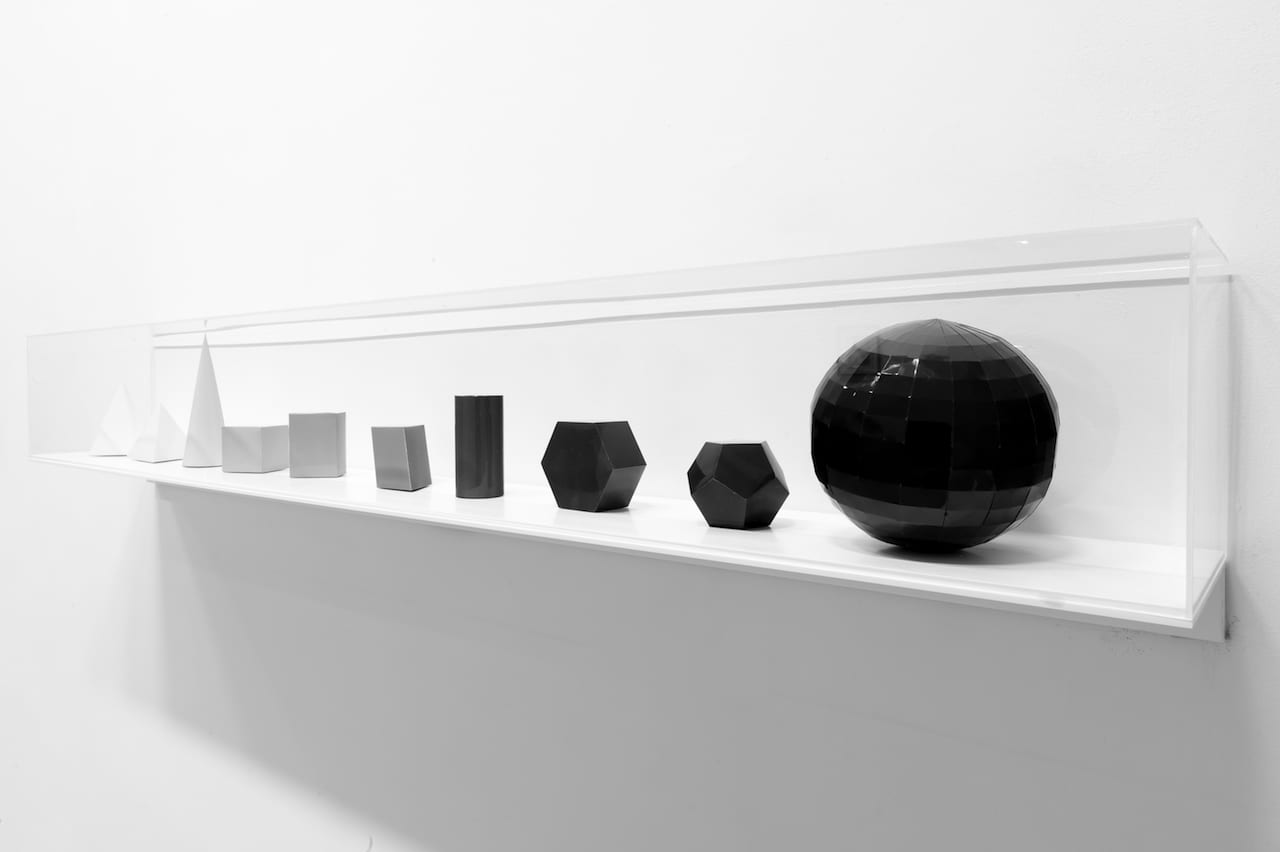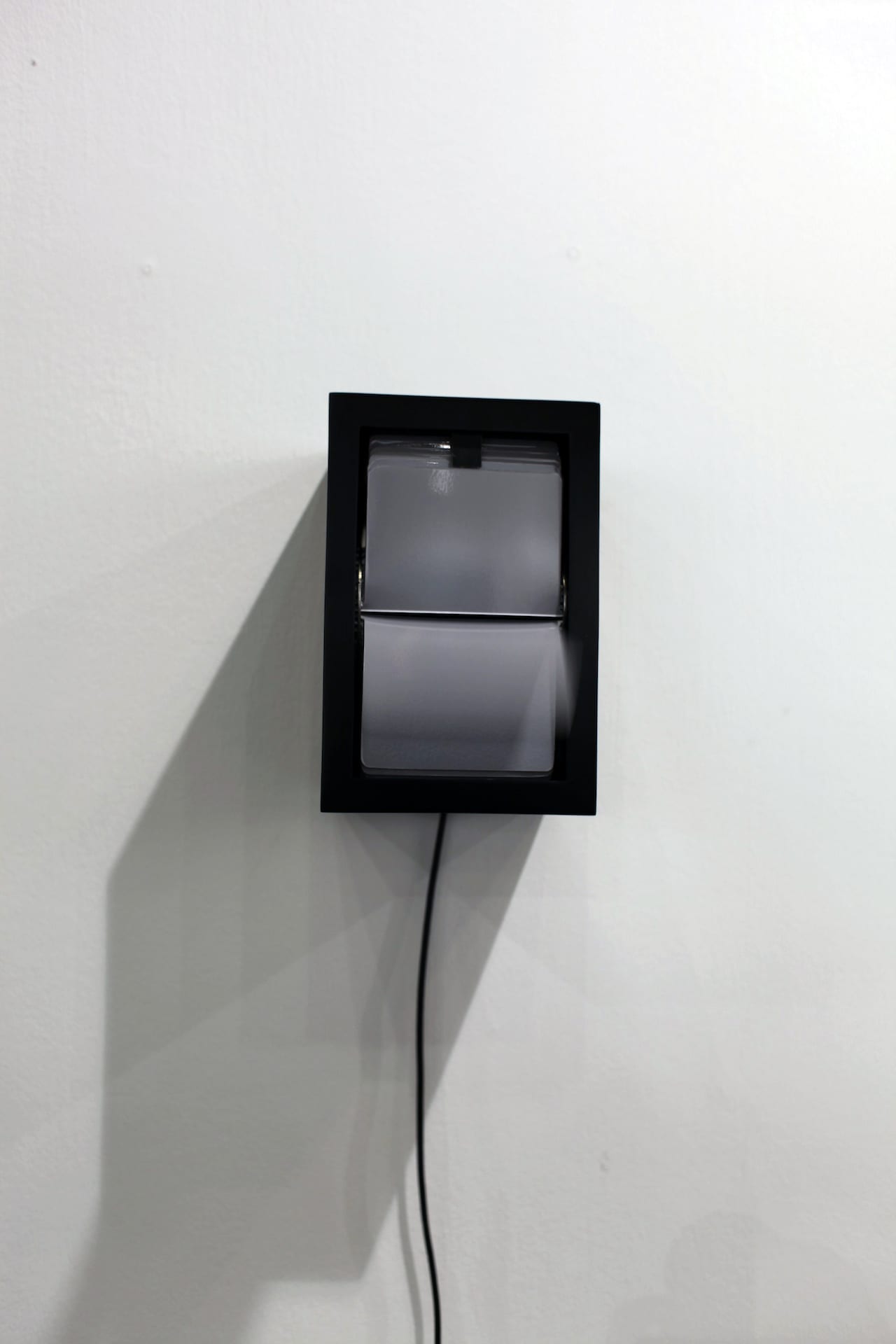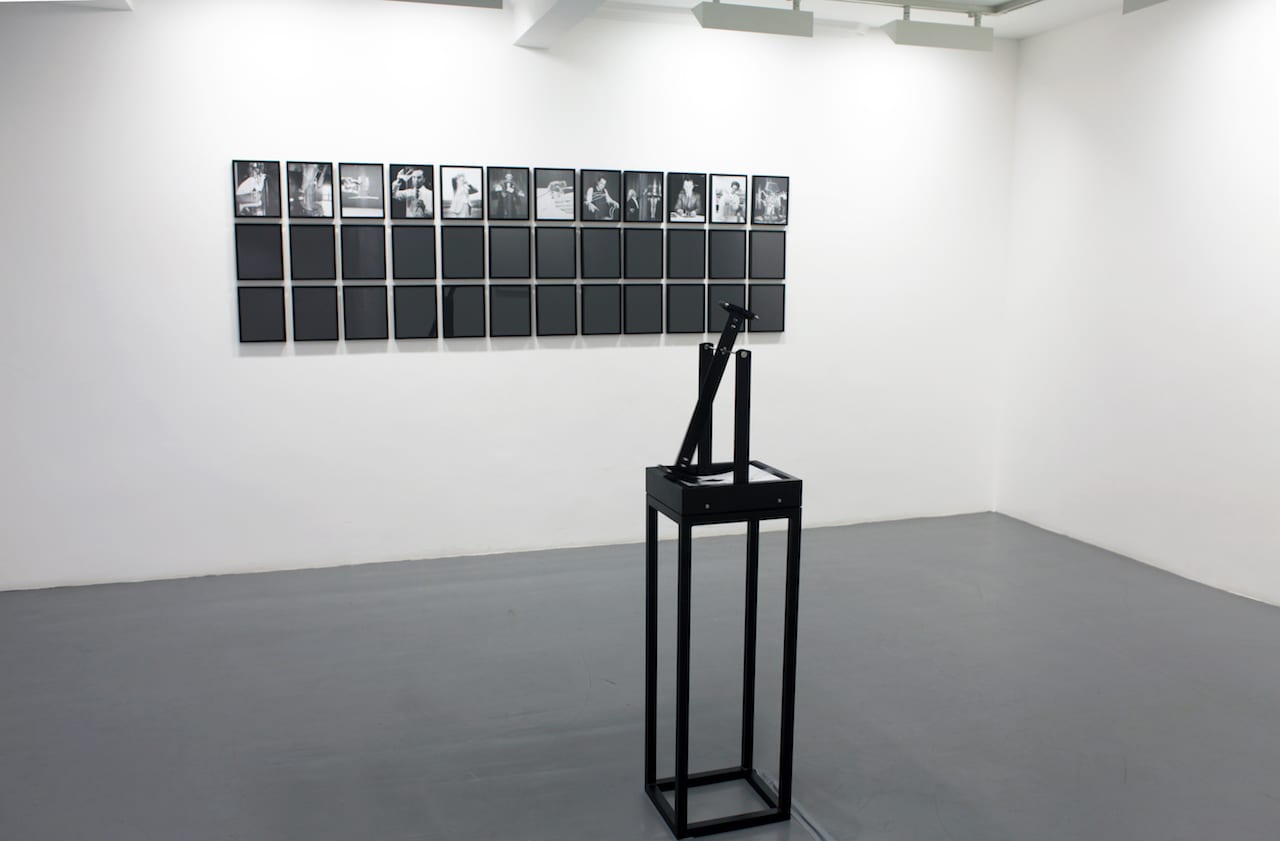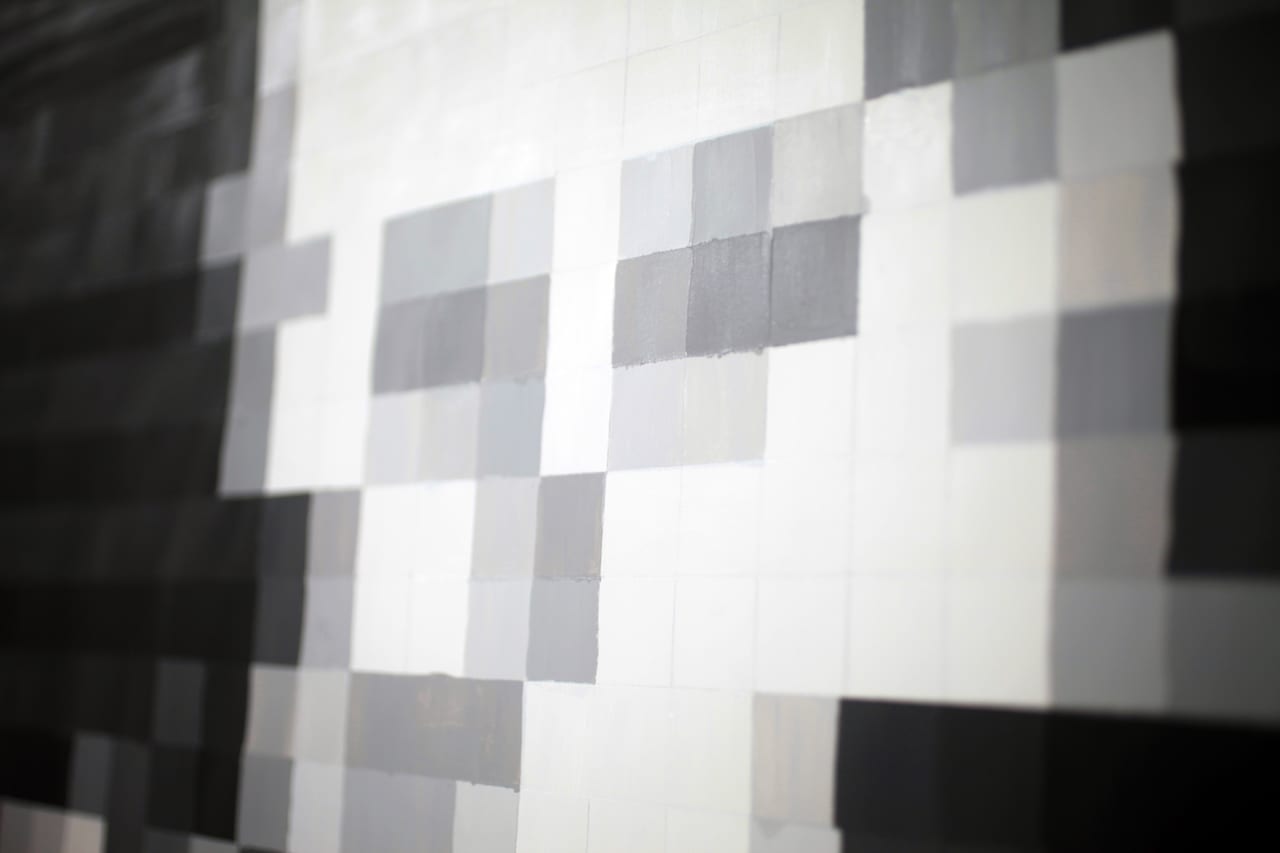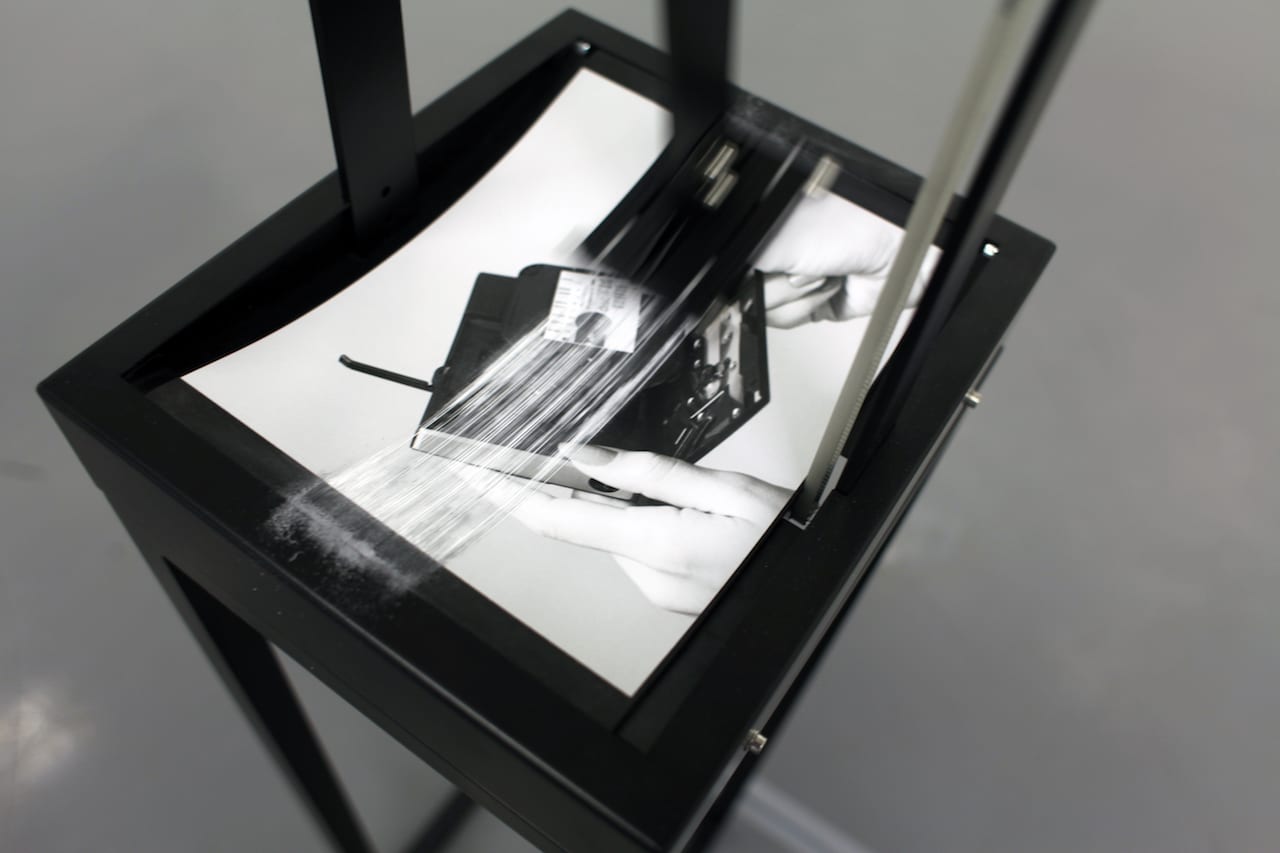Throughout her career, Clare Strand’s work has been deeply embedded in the act of research. Best known for projects such as The Betterment Room – Devices For Measuring Achievement (2005), Skirts (2011), 10 Least Most Wanted (2011), The Happenstance Generator (2015) and The Entropy Pendulum and OutPut (2015), her interests are often centred around the medium of photography itself, “investigating its origins, uses – and limitations.”
For her latest work, The Discrete Channel with Noise, Strand draws on references as diverse as Claude Shannon’s information theory to Roald Dahl’s 1964 novel Charlie and the Chocolate Factory, to discuss the nature of communication.
It was the book’s Mike Teavee character explaining the process of transmitting a photograph that was one of the starting points for this project, says Strand. In the 1971 film adaptation, Mike says: “You photograph something then the photograph is split up into millions of tiny pieces and they go whizzing through the air, then down to your TV set when they are all put together in the right order.”
What Mike fails to predict are the complications and disruptions which can occur during transmission. When Mike transports himself via Wonka Vision, he’s split into a million pieces, but when reassembled, he is a tenth of his original size.
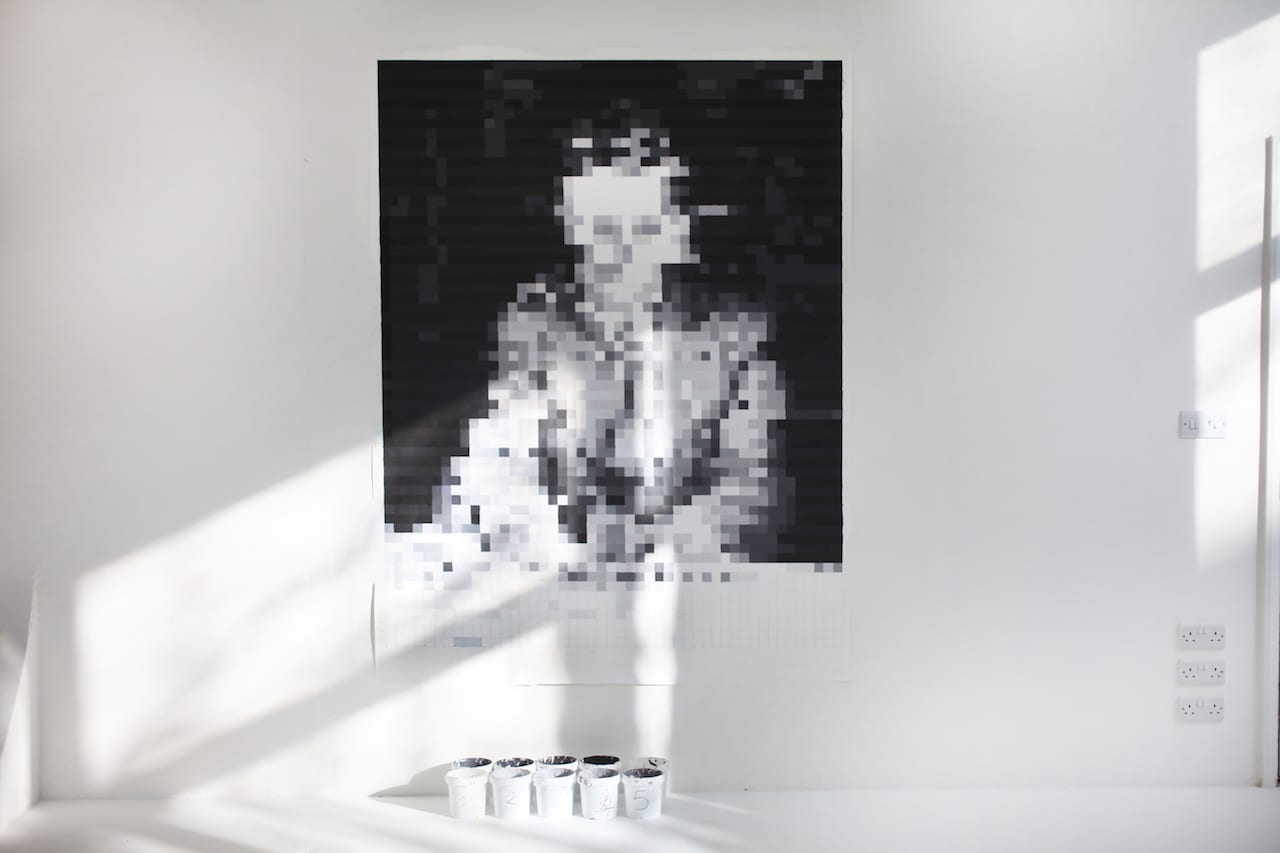
Rewatching the film, Strand began to think more in-depth about the misinterpretation, mismanagement and misrepresentation of information today – whether deliberate or accidental – and the effect this has on our daily life.
Strand was also influenced by George H Eckhardt, who, in his (pre-internet) 1936 publication Electronic Television, discusses the potential for transmitting a coded photograph via telegraph to produce an accurate representation of the original image.
Much of the work in the exhibition was produced during a residency in autumn 2017 at the CPIF, and features photography, painting, machinery and sound installation. Strand asked her husband, Gordon MacDonald, to select images from her archive and create a grid. From there, he would communicate the sequence of numbers depicting the tonal code of each photographic element on the grid and Strand would then paint the code on the corresponding large-scale grid she had drawn up in her studio.
The results of her painting experiment – which go on show alongside other works at the CPIF in France from this April – offer a thought-provoking look at the nature of communication and the consequences that misinterpretation might have in today’s information-saturated world.
The Discrete Channel with Noise runs from 08 April to 08 July 2018 at the Centre Photographique d’Île-de-France (CPIF) cpif.net; clarestrand.co.uk
